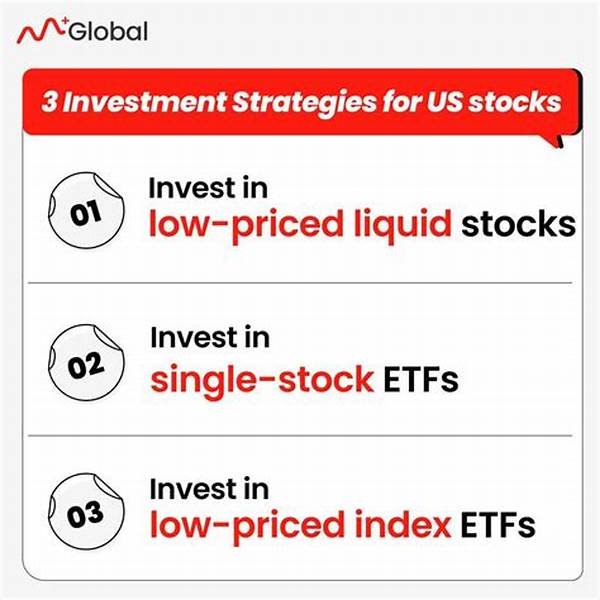Stock Market Trends Beginners Should Watch
In the dynamic and often intimidating world of stock markets, it’s crucial for beginners to have a clear viewpoint on the evolving trends. These trends can seem like complex tidal waves but arm yourself with the right knowledge and you might just find yourself surfing these waves with poise and confidence. At first glance, terms like ‘bull markets,’ ‘bear markets,’ and the cryptic graphs of financial news channels might feel overwhelming. However, understanding the fundamentals is the first step towards demystifying the stock market. The shift from being a curious onlooker to an informed investor is both inspiring and rewarding. Stock market trends do not speak in complex jargon alone: they tell stories of opportunities, of companies’ rise and fall, and of economic shifts that reflect on global scale narratives.
Read More : How To Avoid Scams In Online Investing
For every beginner, the market offers a narrative filled with opportunities to learn, grow and earn. It’s like being handed the script of a potential blockbuster movie where comprehension and timely decision-making can lead to success. As a novice, it’s vital to understand the basics like how the market functions, the timing of investments, and the trends that can significantly affect your investments. Being proactive in identifying stock market trends beginners should watch will equip you with the tools you need to make informed decisions, whether you’re investing for short-term gains or long-term portfolio building.
Successfully navigating these waters requires keeping an eye on trends and knowing the unique factors that can influence stock prices. Current market indicators like interest rates, inflation, and geopolitical events are the headline act in the grand narrative of stock trading. As a beginner, participating in this exciting and unpredictable world means being both a student and an entry-level investor. By embracing the mentality of constant learning and readiness to adapt, you’ll likely find your journey in the stock market as fulfilling as it is enriching.
Having embarked on this journey, you’ll likely find yourself asking: how do individuals forecast these trends, and how reliable are these predictions? Understanding how professionals in the field evaluate and project these trends through analysis and historical data can be illuminating. Engaging with resources, forums, and virtual interest groups dedicated to stock market strategies can enhance your insight and help carve your path as a budding investor.
Essential Trends for Beginners to Watch
Emerging into the world of the stock market means constantly sharpening your skills and staying updated with trending market shifts. One key area to remain focused on involves technological advancements and innovations. As tech giants continue to shape the market landscape, they offer a poignant insight into future market trends. Observing how new technologies affect company valuations can offer profitable investment opportunities for those keen enough to notice.
As a budding investor, it’s important to pay attention to market corrections — these are adjustments in the market where stocks might seem to deflate, but it’s crucial to interpret such cues in perspective. Educating oneself on these corrections is indispensable, as they could either represent a threat or an opportunity based on prevailing market conditions and historical data.
While the world of finance may initially present itself with a veil of complexity, peeling back the curtain unveils trends that are critical for any investor. Patterns like cyclical markets, where certain industries outperform others at different stages of an economic cycle, offer beginners a strategic vantage point. Such knowledge serves as the blueprint for mapping out a successful journey in stock investments.
Moreover, being aware of macroeconomic factors like interest rate trends and fiscal policy changes are integral to understanding price movement and stock market trends beginners should watch. These factors influence stock performance and investor sentiment, serving as vital signposts on your investment journey.
Understanding Stock Market Dynamics
For those new to the scene, the stock market might seem like an unfathomable beast, full of jargon and bustling trades. But to comprehend stock market trends beginners should watch, it’s essential to step away from the noise and grasp the inner workings of this global economic engine. Welcome to the world where seemingly innocuous trends signal seismic shifts, an art as much as science where logic meets instinct.
While some may describe it as a gambling ring dressed in a suit, the genuine allure lies in its strategic play and alliance of analytical prowess with timely decision-making. Beginners should aim to cultivate their understanding by embracing technological tools such as stock market simulators. These simulators represent a risk-free method for testing the waters and honing your trading strategies without the inherent financial pressure.
Shaping one’s path toward becoming a seasoned investor also involves insights into emotional and psychological resilience. The adage ‘buy low, sell high’ constitutes the bedrock of trading wisdom, yet the chaos and thrill of the market demand an astute ability to manage anxiety and impulses under pressure. Newcomers should remember that market trends are not static but evolve with global events, technological breakthroughs, and shifts in consumer sentiment.
For novices, taking advantage of historical sample studies and back-testing strategies can foster better understanding and pattern recognition in stock performance. By studying case studies, beginners glean essential lessons from historical data, thereby avoiding pitfalls that many before them have encountered. Whether it’s following a market leader or uncovering undervalued stocks, the chronicles of the trading floor offer blueprints for success.
Key Elements to Track in Stock Market Trends
Understanding stock market trends is akin to weather forecasting. While you may not be able to predict tomorrow’s rain with perfect accuracy, certain indicators can guide your expectations. Indicators such as momentum, moving averages, and volume trends serve as the compass for the budding investor. Momentum indicates the rate of speed concerning security prices, providing insight into whether a trend will persist or is likely to decline.
Volume trends, on the other hand, are often indicative of the strength or weakness of a price movement. It’s not just about whether stock prices rise or fall, but the force behind these movements that tell the full story. By understanding these trends and their impacts, aspiring investors can develop strategies that align with their risk appetite and financial goals.
As the sequence of buying and selling repeats, historical patterns emerge – these are often the anchors that investors use to predict future performance. While no method is foolproof, a consistently adaptive strategy can shield investors from the blistering impact of market unpredictability. Staying current with financial news and global events adds layers of insight, enabling beginner investors to remain agile and informed.
Finally, understanding the psychological patterns underlying stock markets, such as investor sentiment or “herd mentality,” can reveal how market trends shift with public emotions. Researching case studies of past market bubbles and crashes offer a front-row seat into the balancing act between rational analysis and crowd psychology that defines market dynamics.
Six Goals for Stock Market Beginners
In the exhilarating realm of stock markets, understanding the ripples of market shifts is akin to navigating a complex labyrinth. Beginners eager to delve into the depths of stock market trends beginners should watch must confront an exciting mix of opportunities and learning curves. Amidst a world where terms like ‘blockchain’ and ‘cryptocurrency’ interplay with traditional fiscal elements, the initiation into stocks can be daunting yet surprisingly rewarding.
To grasp these insights, dialogue remains invaluable. Conversations with seasoned investors, attending webinars, or joining dynamic online groups about stock market trends can be a game-changer. Engaging with varying perspectives enriches one’s comprehension and sharpens foresight, turning what may start as mere curiosity into a profound understanding of market intricacies.
Additionally, the role of mentors and financial consultants cannot be understated. Their seasoned advice, often backed by years of market experience, provides clarity and direction in navigating the tumultuous waters of stock investments. Beginners should aim to actively seek such guidance while balancing personal research and hands-on practice with simulated trading platforms.
Decoding Stock Market Signals
In the grand tapestry of stock market dynamics, learning to read and interpret signals poses one of the most rewarding challenges for beginners. It’s essential to distinguish between noise and genuine indicators that convey forthcoming shifts. Whether it’s the quarterly earnings reports of blue-chip companies or fluctuations in global oil prices, each element weaves into a fabric that influences trading decisions.
Central to this is understanding technical analysis – a skill that allows investors to predict future price movements based on historical data and market trends. Learning to interpret candlestick patterns, moving averages, and resistance levels equips investors with the foresight needed in strategically navigating their investments. It is this fusion of art and science that underscores the essence of stock trading.
Another layer involves fundamental analysis, examining the economic, financial, and managerial factors affecting stock valuation. A blend of these methodologies enables investors to develop a comprehensive strategy tailored to their unique financial goals and risk tolerance.
Conclusion on Market Insights
For those venturing into the world of investments, stock market trends are not mere statistics but thrilling narratives waiting to unfold. They provide an opportunity for growth, learning, and financial accomplishment when navigated with informed strategies and psychological resilience. Each tick on a stock chart narrates a part of a grand story — one that is influenced by myriad factors yet offers a pathway to personal success.
By adopting a mindset of continuous learning and strategic planning, beginners can transition from being apprehensive onlookers to confident participants in the market. Whether through simulated platforms that provide safeguarded learning or through real-world engagement with mentors and communities, the journey is as rewarding as it is enlightening.
Illustrative Examples of Market Trends
New technologies influencing valuations of tech companies.
Understanding short-term drops in value and potential corrections.
Recognizing industries that outperform during economic cycles.
Effects of central bank policies on market trends.
Importance of stock volume in price movement analysis.
Emotional patterns influencing the stock market.
How geopolitical changes affect stock market trends.
Embracing the concept of stock market trends beginners should watch not only opens doors to financial growth but also unravels an enriching adventure into the intricate dance of global finance.



